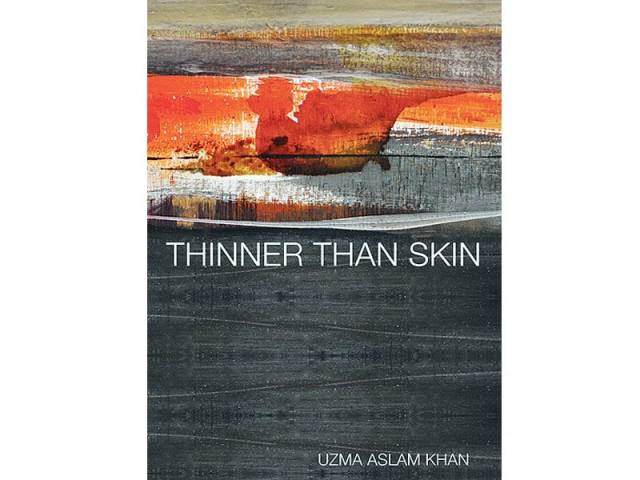Book review: Thinner than Skin - broken images
Thinner than Skin sketches a rich portrait of the indigenous culture of northern Pakistan.

Thinner than Skin moves between a narration of the present and the past, engaging the reader in the details of the plot.
Far from confirming my misgivings, Thinner than Skin sketches a rich portrait of the indigenous culture of northern Pakistan, and highlights the plight of ordinary people in a society in flux. The lives of three individuals— a photographer, a pagan woman and a nomad — are transformed in the setting of Northwest Pakistan— a region of rugged, untouched natural beauty punctured by the wounds of war and terrorism. The plot is made up of three stories: the story of Nadir, a Pakistani photographer in America who is romantically engaged with a Pakistani-German girl, Farhanna, the story of Maryam and her family from the nomad tribe of Gujjar as they struggle to hold on to their customs in a world that is rapidly changing, and finally the story of Ghafoor, man who chooses the life of a wandering tradesman over that of a nomad.
As Nadir prepares his journey to Pakistan, he is advised to forgo his passion for aesthetics and nature in photography. Instead, he is told: “Show us the dirt. The misery”. Fed with stereotypical images of Pakistan, Nadir is apprehensive but Farhana wistfully longs to “return” to the country of her origin. When the couple finally visits Kaghan valley with their friends, Irfan, a widower, and Wes, an environmentalist who is fascinated by Pakistani glaciers, they encounter Maryam and her family — a meeting that will alter their destinies.
Uzma Aslam’s prose is vivid, bringing to life the sensuous setting of the novel as well as the everyday rituals of village life. Interwoven with folk legends and superstitious beliefs, Thinner than Skin moves between a narration of the present and the past, engaging the reader in the details of the plot and yet maintaining good dose of mystery. Although the plot starts out brilliantly, I was disappointed to note that the story loses its vibrancy as it progresses and concludes rather abruptly.
But these minor drawbacks aside, I found Thinner than Skin to be a compelling narrative and empathic portrait of a beautiful region destroyed by dark forces, and of the joys and tragedies of the individuals inhabiting it.
Published in The Express Tribune, Sunday Magazine, January 27th, 2013.
Like Express Tribune Magazine on Facebook to stay informed and join the conversation.



















COMMENTS
Comments are moderated and generally will be posted if they are on-topic and not abusive.
For more information, please see our Comments FAQ